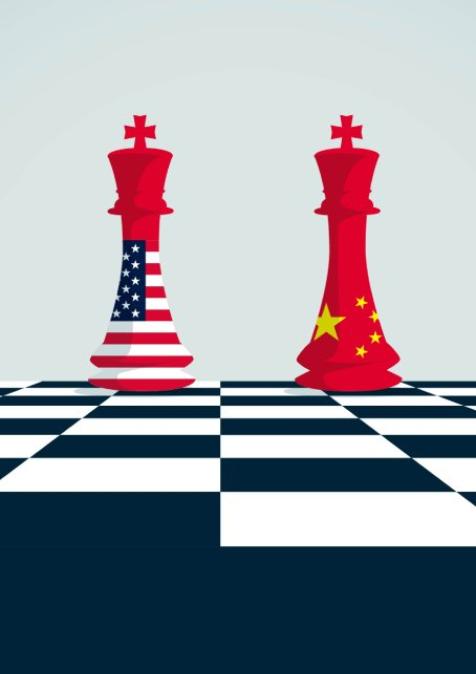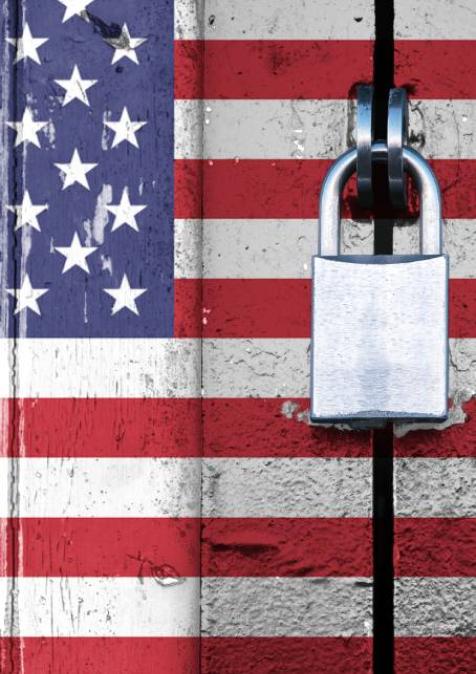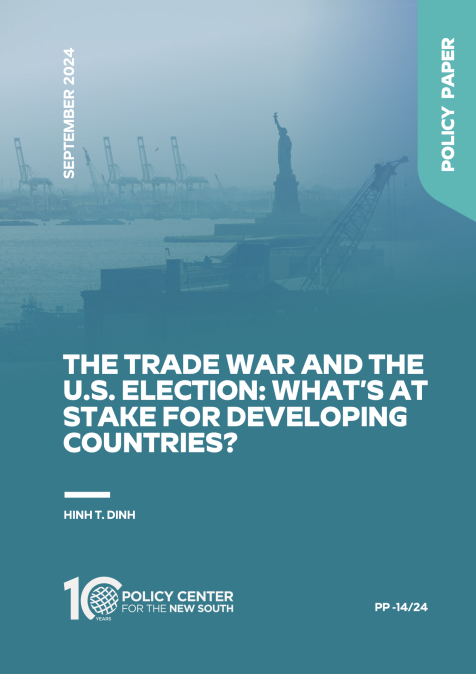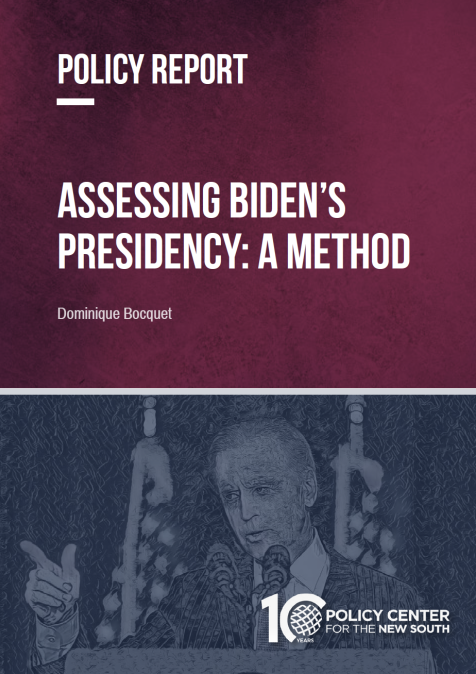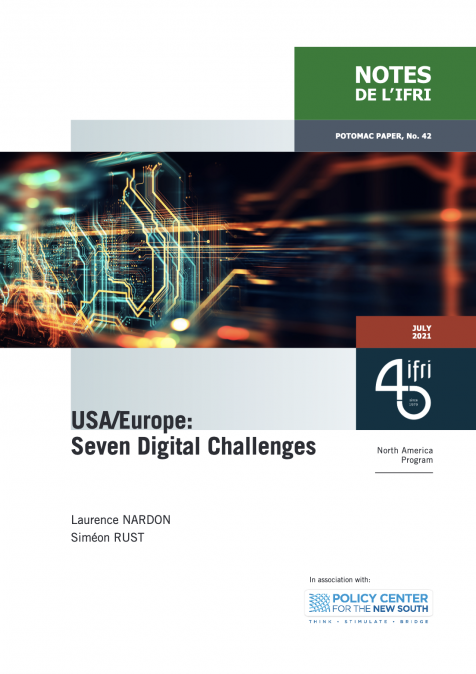Publications /
Opinion
The maxim that in adversity we find unity has never truly materialized following the outbreak of the novel coronavirus (COVID-19). Despite fighting a common enemy, individual societies have turned inwards, moved by a self-preservation instinct that prioritizes individual over collective well-being. Outbursts and demonstrations of solidarity have punctuated national and international responses to COVID-19, but the virus has also often exacerbated structural inequalities, reopening old sores and profound political wounds. Factors such as age, gender, race, and socioeconomic status have coalesced to determine physical as well as socioeconomic vulnerability to the disease, fueling a vicious circle of poverty and poor health. Health inequality has always been a topic of concern, with certain populations bearing the brunt of epidemics, but its impact on polarizing and disenfranchising populations has come into sharper focus during the coronavirus outbreak.
In the United States, COVID-19 emerged at a time of high political polarization, especially after the 2016 Presidential election fueled an ever-greater urban-rural partisan divide. The rise of a controversial figure to the highest office catalyzed the country’s differences, shedding new light on the politicization of several issues, including immigration, wealth inequality, and racial injustice. Yet, the self-segregation of political parties weakens foreign policy consensus, fracturing continuity with previous administrations. These policy swings in turn undermine the ability to demonstrate resolve and long-term commitment. The strength of the United States abroad rests on the pillars of power upon which it rests at home, making it as vulnerable to external threats as to threats from within.
Hyperpartisanship in the 2020 US Presidential Elections
Polarization and divergence over domestic and foreign policy issues have long characterized American politics, mostly due to the bipartisan nature of the United States’ political system creating cleavages along two diametrically opposed ideological poles. With a shrunk space for a viable middle ground, many voters tend to gravitate around the two extremes. This partisan intransigence has sometimes appeared in sharp contrast to the e pluribus unum (out of many, one) motto of the country, sowing the seeds of division instead of unity.
The political culture, both in the United States and elsewhere for that matter, is increasingly antagonistic, attempting to undermine opponents by demonizing the people rather than offering valid criticism of their political agendas. The controversy surrounding the ascendance of President Trump to power best illustrates how political figures individually matter to partisan sentiments. President Trump was never part of the core Republican establishment, only truly entering the political arena in 2016, and yet has managed to galvanize a Republican party that has had to realign its views, political vision, and agenda to match those of their Presidential candidate. His personality has both been an asset to the party, by appealing to a larger base of undecided voters, but also a challenging one that Democrats have found easier to scrutinize, criticize, and eventually reject. Negative partisanship has therefore, come to crystalize political divergences and rekindle frictions, especially given the multiplication and fragmentation of media outlets offering contradictory information. Instead of being confined to the political realm, these antagonisms have permeated social life, essentially eroding the social fabric of the society and driving a wedge between partisans. This also results partially from a confluence of demographic and sociocultural dynamics, fueling a surge in inequality and deeply-rooted grievances. For many minority groups, politics is first and foremost about survival and dignity, which partly explains the surge in political participation after the murder of George Floyd and the traction that the Black Lives Matter movement has garnered.
Minorities’ loss of faith and trust in key institutions has been reinforced by the far-reaching socioeconomic ramifications of the COVID-19 pandemic. Of course, COVID-19 has endangered the lives of thousands of Americans, costing the country about 320,000 lives[1]. It has triggered an unprecedented economic recession, during which the unemployment rate skyrocketed to 14.6% in April[2]. The resulting insecurity has aggravated America’s partisan fault lines, rekindling a century-long debate in which collective security and individual freedom are opposed. For instance, calls for the implementation of severe social distancing measures to reduce transmission rates have been paralleled by the outbreak of anti-quarantine and anti-mask protests throughout the country. These tensions have paralyzed the political ability to implement a national federal response to COVID-19, resulting instead in fragmented responses at the state level. A study conducted by the Pew Research Center[3] highlighted the depth of the political divide resulting from COVID-19. While across all 13 surveyed countries, governing party supporters were significantly more likely to positively assess their country’s handling of the outbreak than those supporting the opposition, the gap was greatest in the United States. About 76% of Republican-leaning Americans reported that the country has handled the outbreak well, compared with only about 29% of Democrat-leaning Americans. Incidentally, the vast majority of both groups equally believe that the country is now more divided than before the COVID-19 crisis.
Yet, while the outbreak has cemented key political differences, it is minorities who have been disproportionately exposed to both the disease and to its reverberations on their financial stability and income levels. Black Americans have, for example, been found to die from the coronavirus at nearly three times the rate of white Americans[4], which has resulted partially from the impact of systemic racism on constraining access to health services and increasing exposure to transmission risks. Compounded by domestic and foreign disinformation campaigns, this has reinforced mistrust and skepticism, reinforcing existing loyalties or creating new ones, in a somewhat balkanized American society where identity politics has metastasized. Nonetheless, it is undeniable that the pandemic has had a, perhaps fleeting, rally-around-the-flag effect. Both parties have had to compromise to an extent in order to enact emergency legislation to alleviate the socio-economic toll of COVID-19, including the Coronavirus Aid, Relief, and Economic Security Act (CARES Act), despite fundamental disagreement over the nature of the federal help to be extended. Yet, bipartisan support will be necessary to move forward with any other comprehensive policy package.
The 2020 Presidential election took place against the backdrop of this hyperpartisanship, testing the capacity of the country to overcome an unprecedented crisis of faith. In many ways, the Presidential election was a popular referendum gauging the leadership of the incumbent President and his ability to demonstrate resilience in the face of the challenges that have plagued the United States. Political participation and voter turnout therefore reached a record high, with over 158 million voters[5], as a torn and anxious nation completed its civic duty through both in-person and mail-in ballots. Ultimately, Joe Biden secured victory, defeating an eligible incumbent for the first time since 1992. Yet, the election has been far more vehemently contested than expected, showing the extent to which the political fracture runs deep.
Polling data forecasted a crushing Democrat victory, with analysts wrongly assuming the homogeneity of key minority groups, primarily Hispanics, and therefore failing to estimate the breadth of Trump’s domestic support. This partly explains why Biden underperformed in Florida, for instance, where the anti-communist, religious, and conservative views of a large group of Cuban-Americans align more with those of the Republican party. Therefore, President-elect Biden must contend with a divided society, of which 74 million voted for President Trump, and a divided government if Republicans maintain control of the Senate.
A Divisive Foreign Policy at Home and Abroad
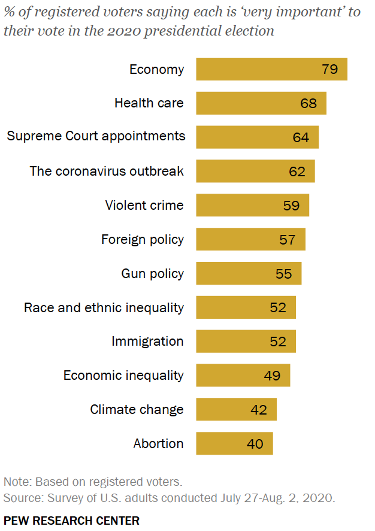
President-elect Biden’s victory is a sobering one. It enacts more an expression of certain Americans’ resentment towards President Trump, rather than a profound approbation of his own political agenda. Deepening schisms within the Democrat party with liberals opposed to progressives, might reignite tensions over key domestic and foreign policy issues, including tax policies, racial justice, immigration laws, and military interventionism.
While foreign policy as a policy area ranks about sixth in the top priorities of voters according to a survey conducted by the Pew Research Center[6], it is so deeply intertwined with other key domestic economic and social concerns, that it has profound reverberations for the daily lives of Americans. For instance, voters have been primarily concerned about their financial well-being and stability following the pandemic recession and in the wake of the elections. Yet, a number of middle-class anxieties stem primarily from the impact of global economic forces and trade imbalances on domestic employment prospects. These economic concerns are central to swing states, and more precisely to Rust Belt states, including Ohio and Pennsylvania, the working class of which lent its support to Trump in 2016 after he promised he would bring back manufacturing jobs. Indeed, the benefits of globalization have failed to translate into real wage increases for all, fueling workers’ disillusionment and the general feeling that the country has entangled itself in multiple wars that have provided few tangible gains. The middle class, far from being a monolithic group, also includes those who value the extent to which the United States’ global commitments preserve homeland security and the country’s financial stability, as well as the importance of American leadership in the face of global common challenges to preserve national interests.
Foreign policy has therefore become a proxy for societal debates, as contrasting visions to alleviate middle-class anxieties translate into contrasting foreign policy visions. While the goals might be similar—defending national security and financial interests—the two parties increasingly disagree on the means to achieve them. On the one hand, President Trump continues to vigorously promote an America First policy, retreating from key multilateral agreements entered by previous administrations, such as the Iran nuclear deal, the Trans-Pacific Partnership, and the 2015 Paris Climate Accord, in addition to withdrawing from international organizations including the World Health Organization (WHO) and the United Nations Human Rights Council (UNHRC). On the other hand, the established Democrat foreign policy has been rooted in post-Cold War liberal internationalism and the projection of smart power. It has been guided by enlightened self-interest to promote democracy and peace worldwide, with the prime purpose of safeguarding American interests at home and overseas. Previous Democrat administrations have thus, long upheld international responsibility and leadership in championing human rights and coordinating multilateral cooperation in order to respond to various direct and indirect threats to national security.
Despite these contrasting visions, foreign policy had for long remained an area over which bipartisan consensus was more easily reached, especially in the face of tangible and identifiable threats, which explains the surge of bipartisan patriotism following the 9/11 attacks. However, in the absence of direct national security threats, different priorities elicit different approaches and profound disagreement. Political polarization weakens the foreign policy consensus, leaving the country vulnerable to foreign interference. It also diminishes the state’s ability to express resolve or commit to agreements over the long-term, or even to be strong enough domestically in order to present a unified front on the international political scene. In fact, presidents increasingly rely on executive orders to bypass congressional obstruction. As a result, these decisions remain constantly under threat of being revoked by subsequent administrations, failing to reassure friends and deter enemies.
The Future Trajectories of American Foreign Policy
The pursuit of an America First agenda over the past four years of Trump’s presidency has reconnected the United States with its historical isolationist inclinations. Indeed, the election of Donald Trump was symptomatic of the salient American isolationist and populist tendencies, which might persist following the economic debacle triggered by COVID-19. Given the socioeconomic toll of the pandemic, a protectionist and non-interventionist stance might also shape Biden’s upcoming presidency. However, this stance will mostly manifest as military disengagement from armed quagmires and will be counterbalanced by a renewed commitment to multilateralism in areas of shared global interest, most predominantly health, climate change, and nuclear proliferation, as Biden aims to restore American leadership, credibility, and influence. His greatest challenge will be to reconcile these increasingly divergent policy lines and negotiate compromises with a potentially Republican-controlled Senate, as well as contend with the ideological fissures within his own party.
Ultimately, this illustrates why, while President-elect Biden's foreign policy could be more conventional and less confrontational than President Trump’s, it may not offer the discontinuity many Americans have hoped for. The President-elect has pledged to reverse some major policies that have enervated the country’s leadership over the past few years, including immigration and asylum policies, as well as the ‘Muslim ban’. However, other foreign policy dilemmas might not be easily resolved. For instance, Trump’s hardened stance against China, through the unilateral imposition of tariffs on Beijing and the launch of boycott campaigns against Chinese 5G infrastructure, is a foreign policy legacy that the Biden administration will not be able to de-escalate easily without jeopardizing both its foreign projection of power and domestic popularity. Indeed, not only is China’s mounting financial and technological hegemony increasingly resented domestically, its influence is also growing unchecked throughout Asia and Africa, in direct opposition to American strategic interests. The cold trade war between China and the United States may have reached a point of no-return, making it harder for a Democrat administration to back down without undermining its credibility. President-elect Biden has even announced he will not immediately end the Phase One trade agreement with China, nor revoke the tariffs imposed on Chinese goods by the previous administration[7]. However, he might seek to prioritize negotiations as a means of resolving commercial trade disputes, relying on traditional multilateral forums such as the World Trade Organization (WTO). Biden’s diplomatic approach might be therefore softer, but far from more lenient. If anything, it is likely to confront Xi’s regime on issues beyond unfair trade practice, including military expansionism and human rights violations. In an attempt to further counter China’s influence in international organizations, Biden’s administration will also seek to curtail China’s growing health diplomacy, by reintegrating the WHO and invigorating a global response to COVID-19, the leadership of which has been lacking.
Similarly, another way to counter China’s influence will be forging a coalition of countries to isolate and apply maximum pressure to Beijing. This will require regaining global leadership and influence, especially among European allies. Yet, the US will operate in a context in which most countries are also heavily leaning towards isolationism, in a quest to regain political, economic, and health sovereignty amidst the current crisis. With the United Kingdom further drifting apart from the European Union (EU), reconciling increasingly isolated and isolationist islands will prove to be one of Biden’s greatest obstacles to consolidating global alliances. Additionally, while a key foreign policy item will be focusing on repairing Washington’s relationship with Brussels and rebuilding trust within the North Atlantic Treaty Organization (NATO) alliance, it is hard to envision further American military engagement or enlargement, due to both congressional and domestic resistance to the overstretching of resources. By way of example, the United States can maintain its diplomatic and logistical support in the Sahel, but without involving itself militarily to alleviate France’s engagement.
The future of American foreign policy will, therefore, oscillate between the two ends of the ideological pendulum, in an attempt to repair domestic trust and restore American leadership. While the latter rests on the promotion of a liberal international order, which might have been jeopardized by American retrenchment over the past few years, the core aspects of its power—financial hegemony, military supremacy, and nuclear capabilities—remain consequential enough for its influence not to wane. However, failure to reach consensus over the means to project and further this power might sabotage the U.S.’s long-term strategic interests. America’s polarization is its Achilles heel at home and abroad, a strong reminder that even in a globalized world, a country cannot forgo domestic woes.
The opinions expressed in this article belong to the author.
[1] Centers for Disease Control and Prevention. (December 22, 2020). United States COVID-19 Cases and Deaths by State. Accessed https://covid.cdc.gov/covid-data-tracker/#cases_casesper100klast7days
[2]US Bureau of Labor Statistics. (May, 2020). Unemployment rate rises to record high 14.7 percent in April 2020. Accessed https://www.bls.gov/opub/ted/2020/unemployment-rate-rises-to-record-high-14-point-7-percent-in-april-2020.htm
[3] Mordecai, M., & Connaughton, A. (October 2020). Public opinion about coronavirus is more politically divided in U.S. than in other advanced economies. Accessed https://www.pewresearch.org/fact-tank/2020/10/28/public-opinion-about-coronavirus-is-more-politically-divided-in-u-s-than-in-other-advanced-economies/
[4] Centers for Disease Control and Prevention. (December 3rd, 2020). COVID-19 Hospitalization and Death by Race/Ethnicity.
[5] Bloomberg. (2020). Voter turnout hits historic levels with states still counting votes. Accessed https://www.bloomberg.com/graphics/2020-us-election-voter-turnout/
[6] Pew Research Center. (2020). Election 2020: Voters are highly engaged, but nearly half expect to have difficulties voting. Accessed https://www.pewresearch.org/politics/2020/08/13/election-2020-voters-are-highly-engaged-but-nearly-half-expect-to-have-difficulties-voting/
[7] Forbes (2020). Biden says he won’t act immediately to rollback trump tariffs on China. Accessed https://www.forbes.com/sites/jackbrewster/2020/12/02/biden-says-he-wont-act-immediately-to-rollback-trump-tariffs-on-china/?sh=542f48e77dae

